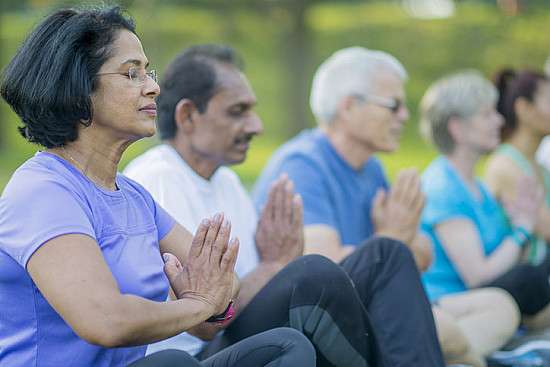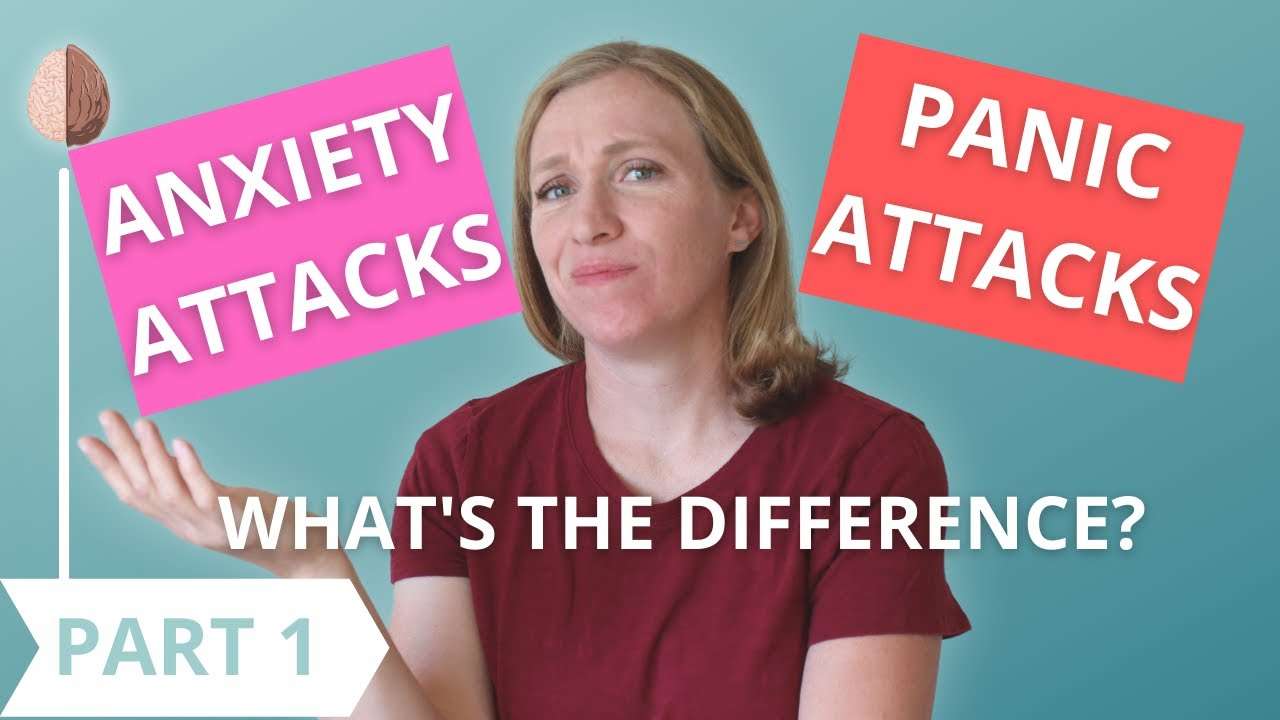For more than a decade, Houston Methodist’s medical director of psychiatry and telepsychiatry has relied on yoga and its healing powers to help maintain her own mental and physical fitness. As one who deals daily with patients suffering mental health crises, Dr. Corinna Keenmon’s profession demands that she maintain focus, clarity, compassion and sound judgment — even on the worst days.
“Yoga seems to have this powerful combination of the physical movement combined with the deep breathing, meditation and mindfulness aspect,” Dr. Keenmon explains. “This total package helps us physically by increasing flexibility, along with heart and brain health. Plus, the cognitive and emotional improvements that happen over time are priceless.”
Yoga’s mind-body practice dates back thousands of years and has dozens of different types. But its basic premise seeks relaxation through breathing and meditation combined with stretching and strengthening poses. Regular practitioners tout yoga’s ability to help them with everything from mood and emotions to muscle tone, endurance and strength.
And science backs these claims.
Yoga’s physical benefits to the brain and body
As a form of low-impact exercise, yoga has been shown to lower stress hormones in our bodies while simultaneously increasing beneficial brain chemicals like endorphins and GABA (gamma-aminobutyric acid). These feel-good chemicals help decrease anxiety and improve mood.
Over time, yoga’s effects also are believed to slow the natural aging process — there is less brain shrinkage in the areas of the brain that process information and store memories, Dr. Keenmon says. “Making yoga a part of our lives can help protect against the effects of aging on our memory and cognition.”
Researchers compared brain imaging and chemical measurements in people who do yoga for 45 minutes to others who practiced a sedentary form of relaxation like listening to music or reading. The levels of good brain chemicals are higher in those who practiced yoga, Dr. Keenmon says.
“Yoga can help lower our fight, flight or freeze response by activating our parasympathetic nervous system and lowering negative emotions like depression, anxiety and anger,” she says.
Even the inflexible can practice yoga
What about those of us who believe we aren’t limber enough to twist into a body pretzel on a yoga mat?
“For people who are starting out, the first step is learning how to focus on just the feeling of breath going in and out of the body,” Dr. Keenmon says. “If you’re 100% in tune and focused on that, you’re not worried about anybody else’s opinions, judgments or other stressors and pressures.”
Unlike so many physical activities that become more difficult with age, yoga is a lifelong, non-competitive form of exercise that allows people to connect with a supportive community — even a virtual one. It can also be a solo practice, part of a dedicated time to step away from the stress of the day and focus on yourself.
Dr. Keenmon says don’t worry about flexibility. “One of the wonderful things about yoga is accepting yourself and your body just as you are today,” she encourages. “This is the mindfulness aspect of yoga — simply appreciating your body for the things that it can do right now in the present moment.”
How to start yoga and ways to continue
COVID-19 brought with it nearly two years of increased isolation and social distancing. In-person yoga became difficult, sometimes impossible to schedule. Yoga, however, creates synergy even when practicing virtually, with friends, strangers or a solo instructor.
Dr. Keenmon’s favorite YouTube yoga — “Yoga With Adriene” — includes videos for all levels. Beginners, seasoned yoga fans and athletes of all kinds can find a short session that interests them. Just a few of the latest sessions: “Morning Yoga Flow,” “Yoga For Forgiveness,” “Stress Melt” and “Head & Heart Reset.”
For those looking for something more high-energy and interactive, the subscription app Obé Fitness (Obefitness.com) includes various types of yoga classes. Obé Fitness also has a social media component that lets members take a live class virtually with friends and family by inviting them to an online yoga party.
Starting a yoga habit is a journey toward improvement. It begins with accepting yourself at all levels — and then experiencing the physical and mental benefits that naturally follow. Even 10 minutes a day can help improve mood, lower anxiety and cut down on emotional reactivity — something all of us going through COVID, round 4, can truly appreciate.
Yoga is practiced by more than 36 million Americans and by many millions more worldwide. A discipline that is thousands of years old, yoga has spiritual and philosophical roots. Many who practice it, especially in the U.S., seek the physical benefits . There are also powerful benefits of yoga for your mental health .
Release helpful brain chemicals. Most exercise triggers the release of “feel-good” chemicals in the brain . These mood boosting chemicals include brain messengers such as dopamine , serotonin , and norepinephrine. Although yoga movements are slow and controlled, they still elevate your heart rate , make the muscles work hard, and stimulate the release of brain chemicals. As a result, yoga can make you happier.
There are many kinds of yoga . The type most practiced in the U.S. is hatha yoga, which combines physical poses and mindful breathing. Yoga can improve balance, flexibility, range-of-motion, and strength. It can also enhance mental health, although these benefits are harder to measure. According to many studies, yoga can:
Relieve depression. Studies show that yoga can ease depression. Researchers have found that yoga is comparable to other treatments, such as medication and psychotherapy. Yoga is usually inexpensive and doesn’t cause the same side effects as many medicines. It can even benefit those with major depressive disorder. The use of yoga for depression needs more study because there aren’t very many controlled trials.
Reduce stress. When Americans answered a survey about why they practiced yoga, 86% of them said that it helped to deal with stress. The tightening and relaxing of muscles can reduce tension. You may also benefit from the peaceful atmosphere, calming music, and positive attitude that you will find in most yoga classes.
Ease anxiety. Yoga can improve anxiety. The breath training included in yoga may be especially effective, as there is a relationship between anxiousness and breathing problems. If you have been diagnosed with an anxiety disorder, yoga may not help. Still, some psychologists are using yoga to supplement other forms of therapy.
Improve sleep. Research suggests that yoga can improve sleep. This may be especially true for older adults. In one study of yoga participants over the age of 60, participants reported an increase in both the quality and quantity of their sleep. They also increased their sleep efficiency, which measures the percentage of time in bed actually spent sleeping.

Source: Pexels
Yoga is widely known for reducing stress, improving flexibility and concentration, and promoting a sense of peace—to name just a few of its possible positive outcomes. On top of its physical benefits, however, researchers are beginning to understand more about yoga’s therapeutic benefits for mental health concerns. In fact, some research indicates that yoga can be an effective “prescription” for a myriad of the most common reasons why people seek psychotherapy.
Just as certain psychiatric medications have shown some efficacy for reducing anxiety and depression, it is important to understand that other therapies like yoga have been shown to improve mental health. Yoga is no longer considered a solely “holistic” approach to improving mental health and well-being—in recent years, it’s gained a scientific following, and has extensive research behind it to support its benefits.
For instance, yoga has been shown to help with the following:
1. Reducing Anger: In one study of adolescents (2012), yoga was shown to increase one’s ability to control anger, compared to a group that participated only in physical education. Practicing yoga has also been shown to decrease verbal aggression in adults.
2. Reducing Anxiety: Numerous studies have found that yoga may decrease anxiety symptoms, including performance anxiety. In one study (2013) with adolescent musicians, yoga decreased anxiety in group and solo performances.
3. Improving Sleep: In one study (2012) of postmenopausal women with a diagnosis of insomnia, yoga reduced insomnia severity compared to a control group. Another study of women with restless leg syndrome showed yoga improved multiple domains of reported sleep quality.
4. Reducing Post Traumatic Stress Disorder (PTSD) Symptoms: In one study (2014) focusing on adult women diagnosed with PTSD, yoga significantly reduced PTSD symptoms in women who received a 10-week yoga treatment compared to the control group. At the end of the study, 52 percent of the women who practiced yoga no longer met criteria for PTSD, compared to 21 percent in the control group.
5. Improving Mood: Studies have shown yoga can help reduce depression, improve affect, and decrease perceived stress. For example, in a study with a prison-based population (2013), a 10-week yoga class increased positive affect and reduced reported psychological stress.

Source: Pexels
Why Does Yoga Work? Yoga Helps the Heart
Many people who practice yoga believe it works simply because they feel good afterward. But research supports the concrete physiological effects of yoga, helping to explain why it helps with mental health issues and emotion regulation. This has to do with yoga’s ability to increase heart rate variability, or HRV. Increased HRV calms the autonomic nervous system, where the body stores trauma.
Researchers have found both yoga and meditation can help increase HRV. Why is HRV important? HRV is simply the distance between one heartbeat to the next. The goal is to try to have increased HRV because it has been shown to calm your autonomic nervous system and regulate your emotions. Imagine when you feel stressed or anxious. Your breathing is shallow and your heart may be beating fast. This is decreased HRV. When you are feeling relaxed or are engaging in deep breathing, there is more space between each heartbeat and your HRV is increased. This leads to feeling more emotionally regulated or calm.
Decreased HRV is correlated with negative affective states such as anxiety, stress, PTSD, and anger. Individuals who suffer with depression, anxiety, flashbacks, and angry outbursts often have trouble regulating their emotions. People who have poorly regulated autonomic nervous systems can be thrown off balance easily both on a mental and physical level. Examples include being “set off” by a minor hassle, road rage, or crying in public when it isn’t warranted. By practicing activities that increase your HRV—like yoga—you can help retrain your heart and physiology, which can lead to emotion regulation and a calmer state.
Yoga is a great complimentary therapy whether it is “prescribed” by your therapist or not. Luckily, no real prescription is necessary! Finding the right program may consist of some trial and error as there are several types of yoga to choose from (hot, yin, hatha, yang, etc). Some enjoy the more physical active styles (yang) like vinyasa or bikram. Others may enjoy a slower-paced practice (yin) or a combination of both. Regardless of the type of yoga you choose, its numerous physical and psychological benefits can make it an important part of your therapeutic process.
This blog post was also posted on my website.



